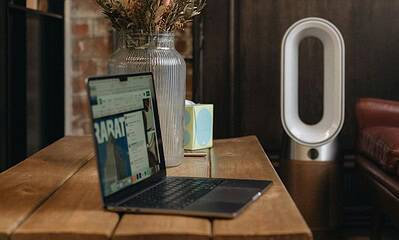Sponsored
iKoffy EdiBot: The AI food printer that’s actually here
The iKoffy EdiBot represents something genuinely useful in the food printing space: a device that’s actually portable, reasonably priced, and designed for real-world use.
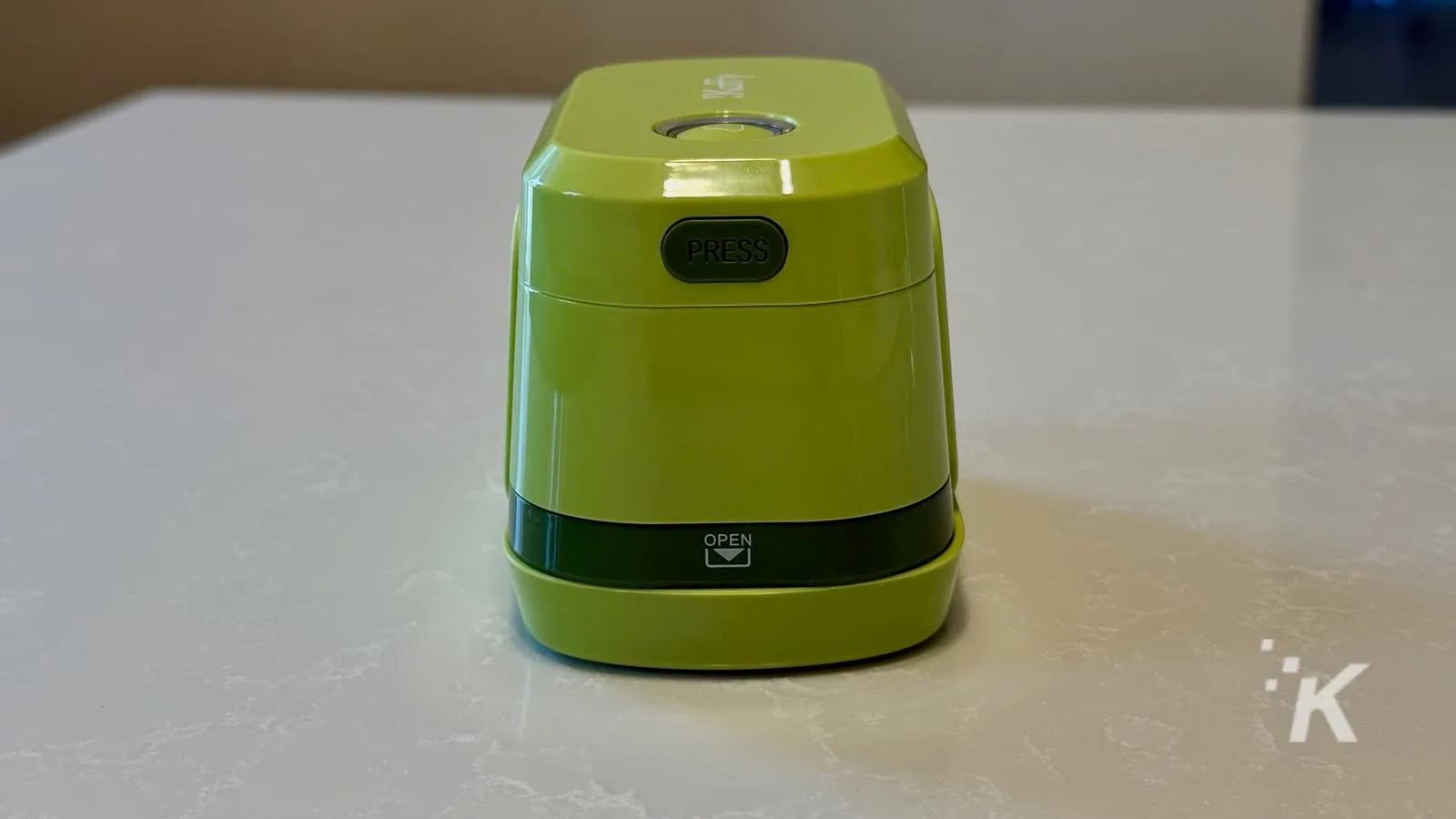
Just a heads up, if you buy something through our links, we may get a small share of the sale. It’s one of the ways we keep the lights on here. Click here for more.
Food printers have been around for years, but they’ve always been expensive, bulky, and frankly, impractical for most people.
Picture those massive commercial units that cost several thousand dollars, require dedicated counter space, and need a technician to operate properly.
Not exactly something you’d throw in your kitchen drawer next to the spatulas.
Enter the iKoffy EdiBot, which recently wrapped up a successful Kickstarter campaign that raised $117,677 from 447 backers.
While that’s not exactly groundbreaking crowdfunding territory, it’s solid validation that people actually want a food printer they can use without needing a small business loan.
The device promises to do something that’s always seemed just slightly out of reach: put custom images on your food without the complexity, cost, or counter space requirements of traditional systems.
After spending time with the EdiBot and diving deep into both the marketing claims and real-world editorial coverage, here’s what you need to know about whether this AI-powered gadget lives up to its promises.
What this thing actually is
The iKoffy EdiBot is essentially a handheld inkjet printer that weighs 5.8 ounces and fits comfortably in your palm. Think of it as a chunky label printer that happens to work with food-safe ink.
The device connects wirelessly to a free iOS/Android mobile app and prints by being manually dragged across whatever surface you want to decorate.
The technical specs are actually impressive for something this size:
- 1200 DPI resolution (which iKoffy claims is 4x the industry standard for portable food printers)
- Full CMYK color printing,
- Patented “NanoJet” cartridge system that’s supposed to deliver up to 10,000 prints while using 30% less ink than comparable devices.
The print area is limited to 0.92 inches wide, though you can print up to 1.2 meters in length if you’re working on ribbons or multi-line designs.
For most food applications, you’re looking at small designs—think logo-sized prints on cookies or simple images on latte foam.
The AI component comes through the companion app, which includes an image generator that creates designs based on text prompts.
The app also houses pre-made templates and allows you to upload and edit your own images with basic tools like crop, zoom, and layout adjustment.
Real-world performance deep dive
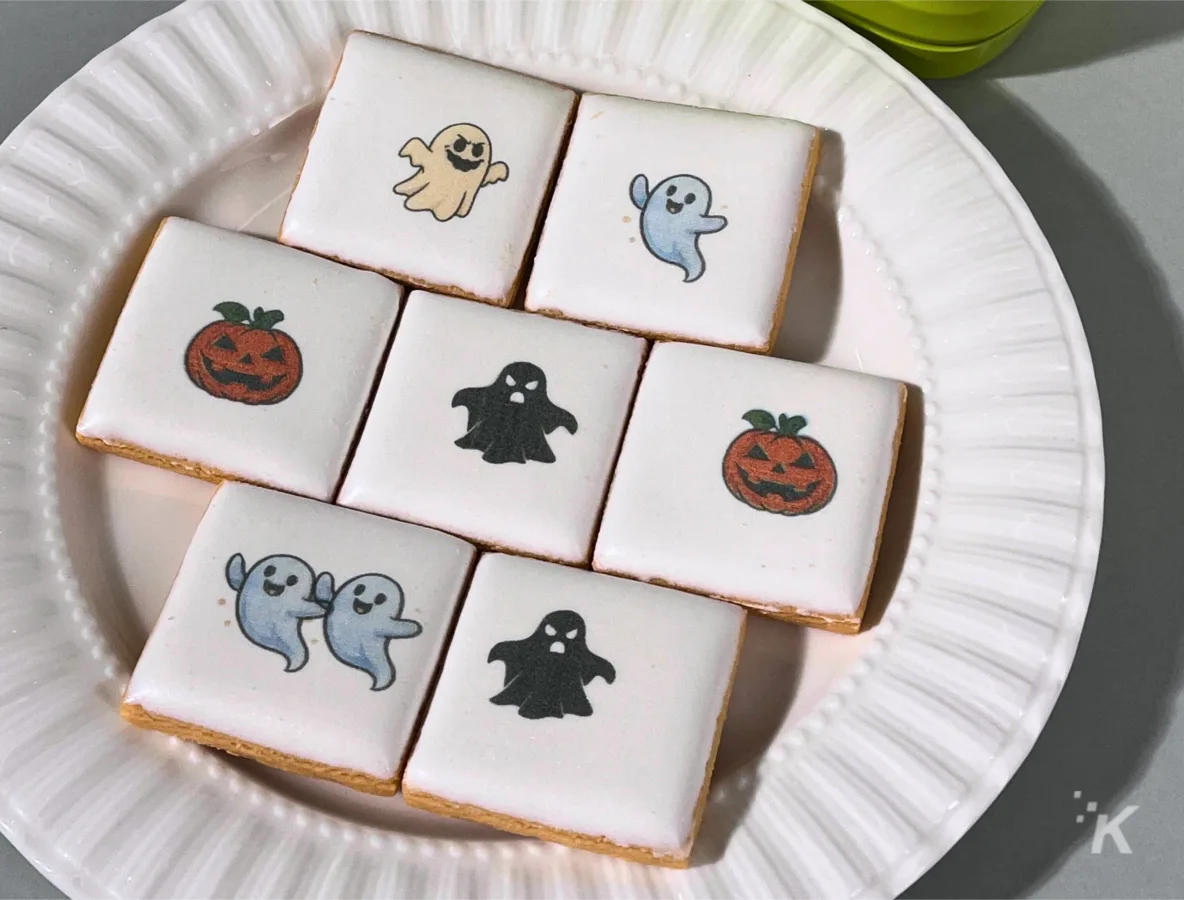
Here’s where things get interesting. The device has surprisingly good print quality for something this compact.
Images come out sharp and vibrant, particularly on light-colored surfaces like milk foam, cookies, or fondant.
The 1200 DPI resolution appears to genuinely deliver crisp output that exceeds expectations for a handheld device.
But there are important caveats. The printing process isn’t automated—you physically drag the device across the surface from left to right —and the quality depends heavily on maintaining consistent speed and pressure.
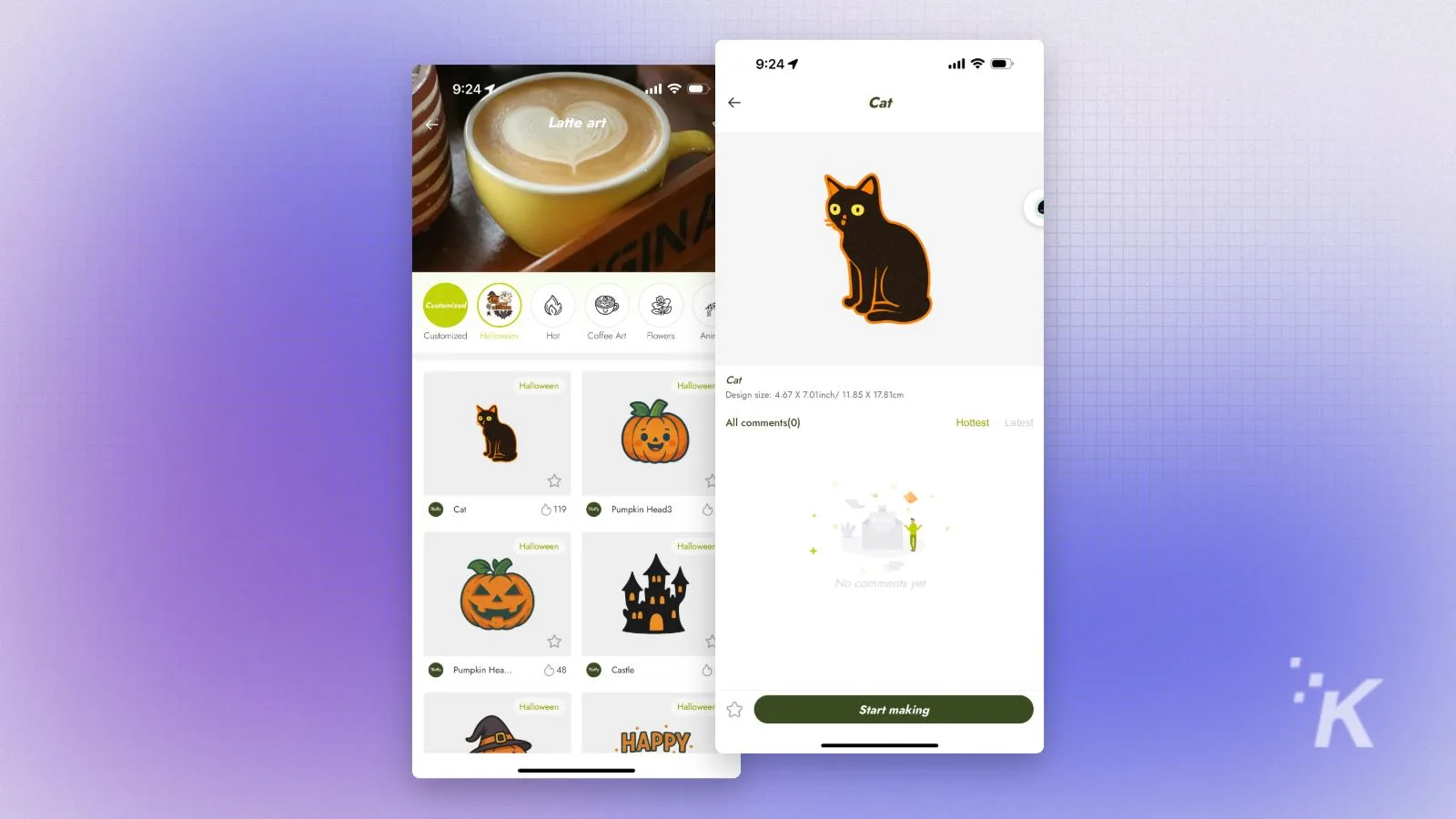
Mastering the printing process takes practice, and you’ll need to run several test prints before getting consistent results.
On coffee specifically, which seems to be a primary use case, testing found that prints hold their shape surprisingly well and only start to blur after about a minute.
That’s enough time to snap a photo or serve the drink, but don’t expect the design to last through a long conversation.
The device works best on flat, light-colored surfaces. Dark backgrounds don’t show the colors well, and textured surfaces can cause uneven ink distribution.
The food-safe ink is made from FDA-approved ingredients, including glycerin.
The device charges via USB-C, and the companion app is available for both iOS and Android.
What actually works well
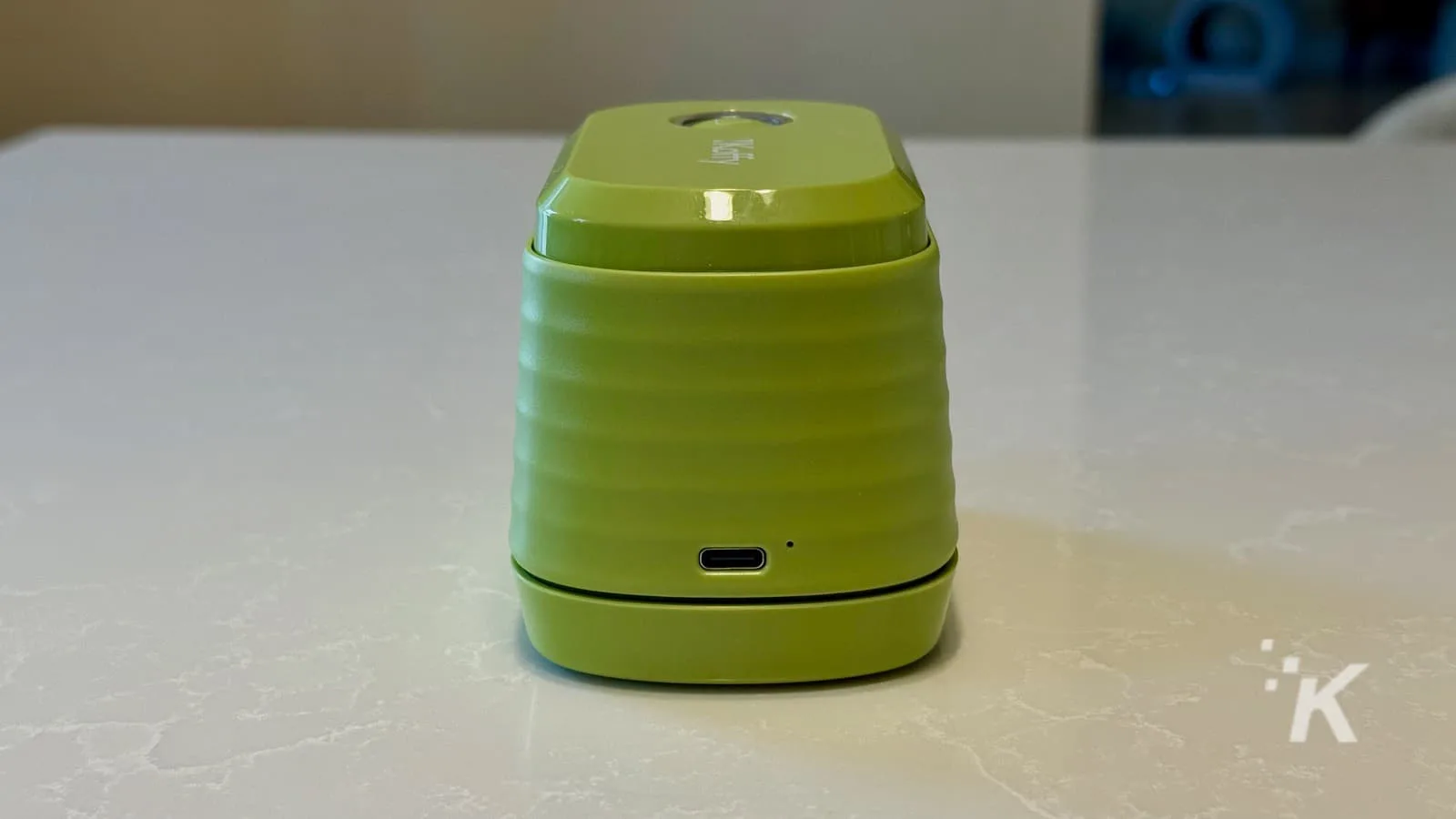
The portability factor is genuinely impressive. At 5.8 ounces, this actually does fit in a pocket or small bag, making it viable for events, parties, or mobile food businesses.
Unlike traditional food printers that are essentially stationary appliances, you can realistically take this thing places.
The food safety aspect appears to be handled properly. The ink is FDA-certified for direct food contact and is both vegan-friendly and kosher-compliant.
The ink uses vegan, Kosher-friendly, FDA-approved ingredients, addressing concerns about safety and dietary restrictions.
The AI image generation, while not anything ground-breaking, actually works as advertised.
Rather than being a marketing gimmick, it’s genuinely useful for creating quick designs without needing design skills or hunting for appropriate images.
Perhaps most noteworthy for small businesses, the device offers genuine differentiation potential.
iKoffy claims that cafés and bakeries can “increase engagement and upsells by up to 300%” – though it’s important to note this is a marketing claim from the company rather than independently verified data.
The cartridge system deserves mention, too. With a rated capacity of 10,000 prints, you won’t constantly be buying expensive consumables.
Even at moderate use, a single cartridge should last months for most users. And when you need to replace it, a replacement cartridge runs around $79-$99.
The honest limitations
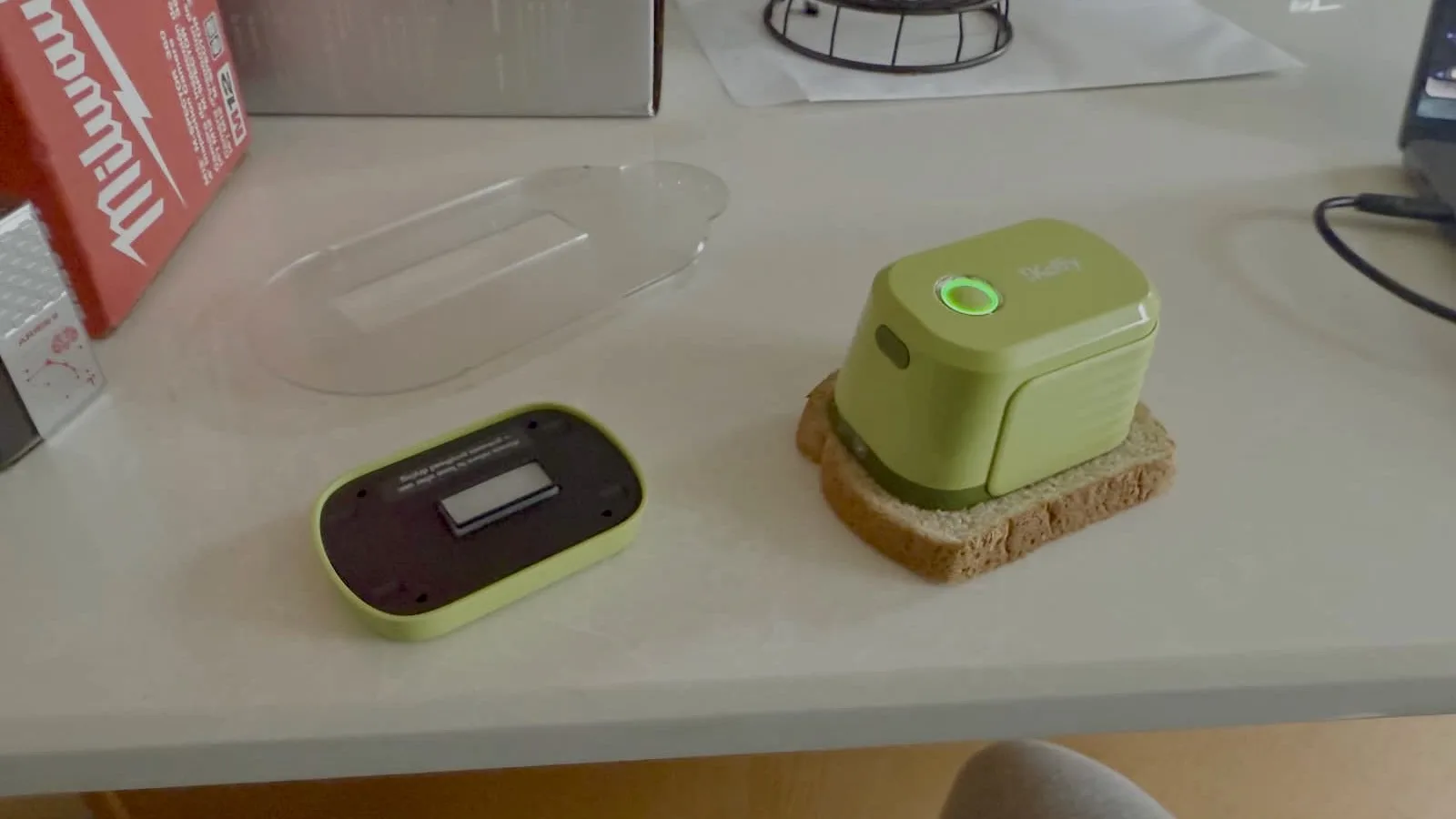
Let’s be clear about the constraints. The 0.92-inch print width severely limits what you can create.
This isn’t going to replace intricate latte art or detailed cake decorating – it’s more like adding a logo or simple image to your creations.
The manual operation is both a feature and a limitation. While it keeps costs down and makes the device portable, it also means every print requires physical skill and practice.
TechWalls noted that developing “a feel for the right dragging speed” is essential, and early attempts often result in distorted images.
The price point requires consideration too. Kickstarter backers paid between $199-$309 depending on the tier, while the device is currently available for $249 (down from a regular price of $399).
For that money, you’re getting a specialized tool that does one specific thing reasonably well, rather than a versatile kitchen appliance.
The competition
The iKoffy EdiBot sits in an interesting market position. Traditional commercial food printers cost $2,000+ and are designed for high-volume operations.
Handheld alternatives are rare, and most existing portable printers aren’t food-safe.
The Kickstarter campaign’s modest success (447 backers, $117K raised) suggests healthy but not overwhelming demand.
For comparison, breakthrough kitchen gadgets often see millions in crowdfunding. This feels more like a solid niche product finding its audience.
Development began in June 2024 with delivery scheduled for September 2025 – a reasonable 15-month timeline that suggests proper planning rather than rushed development.
The fact that the device is already available for purchase indicates they’ve successfully navigated the production challenges that often derail crowdfunded hardware projects.
Who this actually serves

The sweet spot seems to be small-scale applications where customization adds meaningful value.
Home users throwing themed parties, small cafés wanting to differentiate their offerings, or food entrepreneurs operating at farmers markets could find genuine utility here.
It’s particularly well-suited for situations where the “wow factor” of custom food printing justifies the time and effort required.
Printing a birthday message on a cake, adding logos to corporate event cookies, or creating personalized latte art for social media content all make sense.
The device’s ability to print on surfaces beyond food – napkins, gift boxes, fabric, even skin for temporary designs – expands its utility for event planners and small businesses looking for creative marketing applications.
What it’s NOT ideal for: high-volume commercial operations, situations requiring precise artistic detail, or users who want fully automated “press button and walk away” functionality.
The bottom line
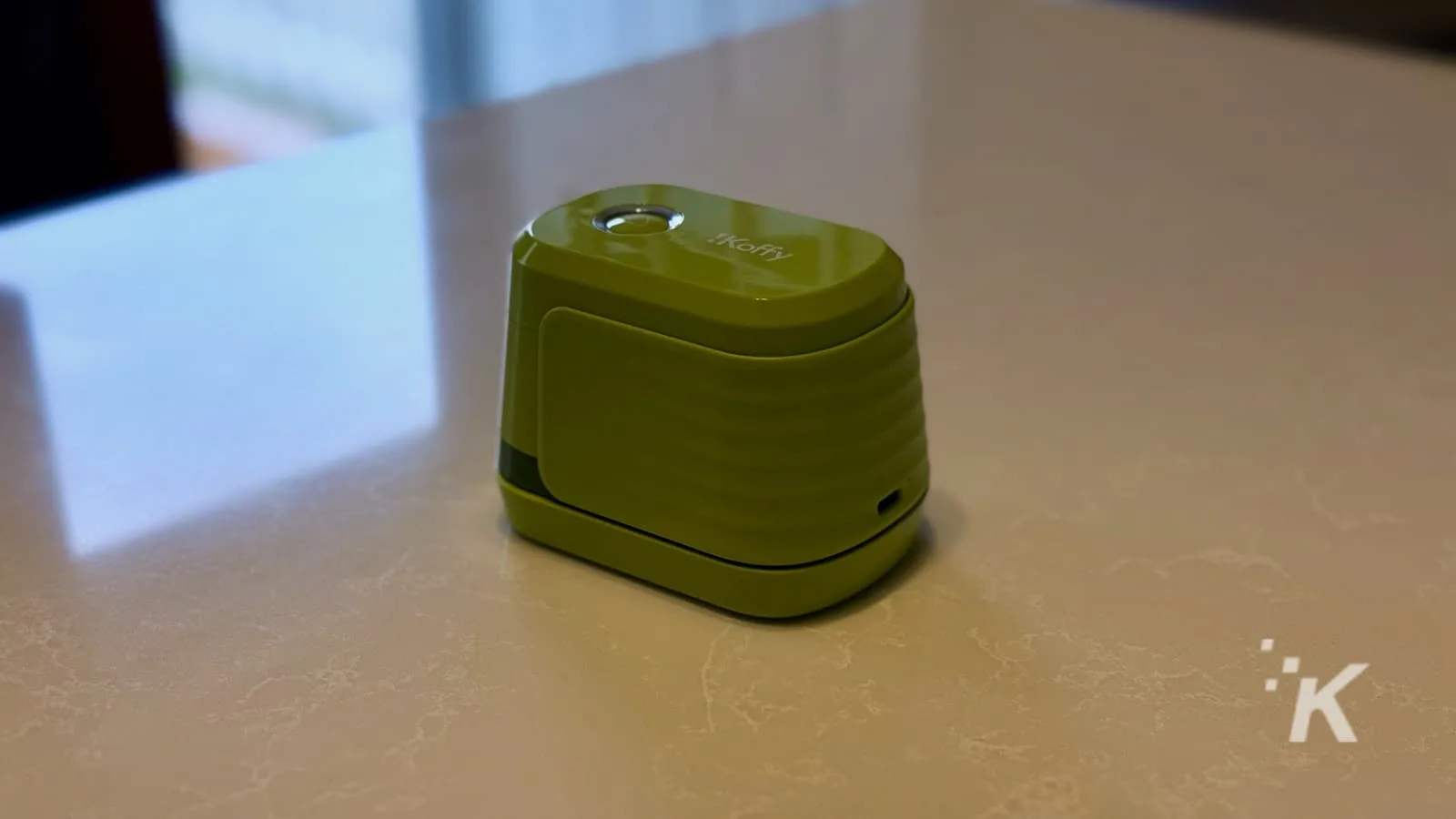
The iKoffy EdiBot represents something genuinely useful in the food printing space: A device that’s actually portable, reasonably priced, and designed for real-world use rather than industrial applications.
It’s neither the revolutionary breakthrough that marketing materials suggest nor the gimmicky toy that skeptics might expect.
The technology works as advertised, with legitimate 1200 DPI print quality and functional AI integration.
The food safety aspects appear properly handled, and the device delivers on its core promise of putting custom images on food surfaces.
However, success with this device depends heavily on having realistic expectations. If you’re looking for automated perfection or professional-grade results, you’ll be disappointed.
If you want a fun tool that adds customization capability to your food presentations and you’re willing to practice the manual technique, it could be a worthwhile investment.
At the current retail price of $249 (regularly $399), it’s positioned as a specialized tool rather than an impulse purchase.
For the right user – someone who values customization, enjoys the hands-on aspect, and has specific applications in mind – the EdiBot delivers genuine functionality in a space that’s been dominated by prohibitively expensive alternatives.
The question isn’t whether it’s revolutionary technology – it’s whether portable, manual food printing at this price point solves a problem you actually have.




















